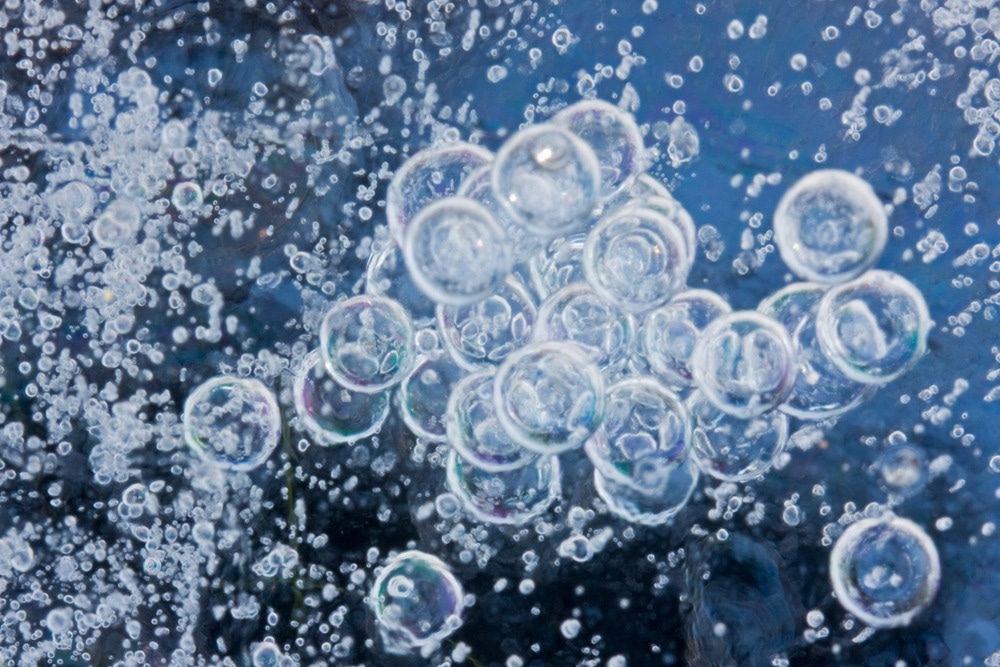Light-matter interactions enhanced by optical microcavities provide a potent tool in the form of microresonators for quick and accurate sensing methods. Such tools pave the way for applications in molecule sensing applications, including nanoparticles, cells, and larger molecules.

Study: A Monolithic Graphene Functionalized Microlaser for Multispecies Gas Detection. Image Credit: Matauw/Shutterstock.com
These microresonators are inherently inert, which unfortunately restricts their use in emerging research areas, including gas detection.
In a paper accepted in the journal Advanced Materials, researchers developed a microlaser sensor functionalized by depositing monolithic graphene in an erbium (Er)- loaded over-modal microsphere.
The graphene-functionalized microlaser enabled lab-free multispecies gas detection from gas mixtures as well as molecular-level gas detection with ultra-high sensitivity.
Gas Detection Using Whispering Gallery Mode Micro Cavities
Microresonators based on the whispering gallery mode (WGM) have the greatest quality factor among the different microresonator structures. In recent years, this feature has propelled WGM-based microresonators to the heart of research on photonic sensors.
A beam of light experiences total internal reflection along a concave edge in whispering gallery waves, leading to the propagation of light in circulatory waveguide modes.
The increased interactions of light and matter in a whispering guide wave microcavity allow microsensors, microlasers, and micro spectrometers to form.
A whispering guide mode micro cavity provides distinct benefits when used in chemical and biological sensing. It offers high-frequency resolution in the sub-megahertz range by determining the passive interference among various cavity modes and the shift or widening mode resonances.
DNA, protein molecules, viruses, singular cells, and nanoparticles have all been detected previously using this method.
Scope for Future Advancements Using WGM
Inside active cavities, in which the monolithic integration of a laser gives better stability and enhanced frequency resolution, the performance of a whispering gallery mode sensor may be enhanced even further.
Such systems show considerable potential for gas detection purposes; however, the materials utilized in standard whispering gallery mode microcavities are inherently inert and hence inadequate for gas adsorption and gas detection.
Two-dimensional materials can be hybridized with microcavities, such as WGM-based microresonators. This provides a new approach for increased interaction among photons and electrons and thus creates a unique gas detection platform.
Research Methodology
The team presented an active WGM-based microsphere laser system functionalized using a singular graphene sheet. The device was capable of ultrasensitive multispecies gas detection.
The microlaser could detect carbon dioxide, ammonia, nitrogen dioxide, and water molecules in a mixture on a molecular level.
The team produced several laser modes in a single device because of its over-modal nature. Graphene interacted with higher-order modes in the laser microcavity without thermal degradation by depositing the graphene monolayer 20° off the equator.
The backward scatter caused by the graphene monolayer led to symmetry breaking as well as mode splitting at particular frequencies, which could be accurately detected using an optoelectronic heterodyne beating.
Furthermore, the adsorption of gas molecules on the graphene monolayer affected its Fermi level, which changed the effective permittivity of the microcavity, resulting in tens of kHz/ppb variations in mode splitting.
The researchers could then accurately quantify the presence of different gases in a mixture with great accuracy, selectivity, and sensitivity.
What Did the Researchers Conclude?
In this study, the team generated several splitting-mode lasers in an active microresonator functionalized with graphene, creating an all-optical ultrasensitive sensor for multispecies gas detection.
The researchers placed a graphene monolayer 20º off the microresonator's equator. This allowed them to identify and measure the laser splitting offsets, which were particularly sensitive to polar gas adsorption on graphene.
The radio frequency spectrum could easily monitor the beating signals generated by these frequency offsets.
By exploiting the narrow and consistent line widths of the microlaser system, a sub-kilohertz spectral resolution was achieved, which made gas detection possible at the ppb concentration level. Furthermore, several beats in one device enabled the detection of various gases in a mixture.
This system provides a label-free optical instrument for qualitative as well as quantitative gas detection, with the added benefits of small size, minimal power usage, and ease of operation.
Reference
Guo, Y., Li, Z. et al. (2022). A Monolithic Graphene Functionalized Microlaser for Multispecies Gas Detection. Advanced Materials. Available at: https://onlinelibrary.wiley.com/doi/10.1002/adma.202207777
Disclaimer: The views expressed here are those of the author expressed in their private capacity and do not necessarily represent the views of AZoM.com Limited T/A AZoNetwork the owner and operator of this website. This disclaimer forms part of the Terms and conditions of use of this website.